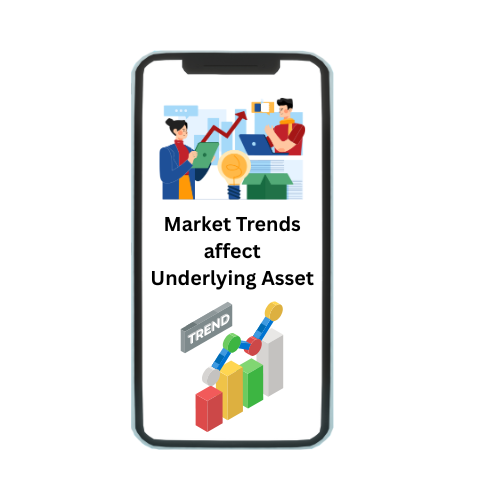Expected Utility is a fundamental concept in economics and decision theory that helps explain how individuals make choices under uncertainty. At its core, the expected utility theory proposes that people evaluate different outcomes of a decision based on their perceived utility, which reflects the satisfaction or benefit they anticipate from those outcomes. Rather than focusing on the actual monetary values of different choices, expected utility considers how likely each outcome is and how desirable it is to the decision-maker. The theory posits that individuals will choose the option with the highest expected utility, which is calculated by weighting the utility of each possible outcome by the probability of that outcome occurring. This approach allows for a structured way to make rational decisions when faced with uncertainty and risk, providing a framework for understanding choices in various contexts, from financial investments to personal life decisions. Expected Utility Theory not only helps in predicting decision-making behavior but also serves as a foundation for more advanced economic models and analyses.
What Is Expected Utility?
Expected Utility is a key concept in decision theory and economics that describes how rational individuals make choices under conditions of uncertainty. At its essence, Expected Utility represents a method for evaluating and comparing different options based on the perceived satisfaction or benefit (utility) they provide. Rather than merely considering the potential outcomes’ monetary values, Expected Utility theory incorporates both the probability of each outcome and the subjective value that an individual assigns to those outcomes. To calculate the Expected Utility, one multiplies the utility of each possible outcome by its probability and then sums these values across all possible outcomes. This calculation yields a single number that represents the average or “expected” level of satisfaction one can anticipate from a choice. This framework assumes that individuals aim to maximize their overall satisfaction or utility, providing a structured approach for making decisions that involve risk and uncertainty. By focusing on expected utility rather than just expected monetary value, this theory helps to explain why people might choose options that seem less profitable in a purely financial sense but offer a better balance of risk and reward, reflecting their personal preferences and risk tolerance.
The Basics of Utility Theory
Utility theory is the foundation for Expected Utility. It posits that people make decisions to maximize their overall happiness or satisfaction. Expected Utility extends this by introducing probabilities into the mix, making it possible to evaluate choices in uncertain situations.
History Of The Expected Utility Concept
The concept of Expected Utility has a rich and evolving history that traces back to the 18th century, rooted in efforts to understand and formalize decision-making under uncertainty. The origins of Expected Utility Theory can be attributed to the work of the Swiss mathematician Daniel Bernoulli in 1738. In his seminal work, “Exposition of a New Theory on the Measurement of Risk,” Bernoulli introduced the idea of utility to explain why individuals might make choices that appear irrational from a purely financial perspective. He proposed that people’s decisions are driven by the potential for satisfaction or utility, rather than just expected monetary outcomes. This notion was further developed by mathematician and economist Leonard Savage in the 1950s through his work on subjective probability and decision-making, which formalized the concept into what we now recognize as Expected Utility Theory. Savage’s work built upon earlier contributions by John von Neumann and Oskar Morgenstern, who, in their 1944 book “Theory of Games and Economic Behavior,” laid out the mathematical foundations for game theory and formalized Expected Utility as a way to model rational behavior in economic decisions. Over time, the theory has been refined and expanded, influencing diverse fields such as economics, finance, and behavioral science. The development of Expected Utility Theory reflects a broader quest to understand human decision-making processes in uncertain environments and continues to be a cornerstone of modern economic theory and practice.
Applications Of Expected Utility Theory
Expected Utility Theory has a wide range of applications across various fields, providing a foundational framework for understanding decision-making under risk and uncertainty. In economics, it helps explain consumer choices, investment decisions, and market behavior by offering a way to quantify and compare the expected satisfaction from different options. For instance, investors use Expected Utility Theory to assess the risk versus reward of financial portfolios, aiming to maximize their expected returns while considering their personal risk tolerance. In finance, it underpins models like the Capital Asset Pricing Model (CAPM) and the theory of efficient markets, which analyze how investors make decisions about asset allocation and market strategies. Beyond finance, Expected Utility Theory is crucial in insurance, where it helps design policies and pricing structures that balance risk and reward for both insurers and policyholders. In public policy and health economics, the theory aids in evaluating the outcomes of different policy options or health interventions by comparing the expected benefits and costs to society. For example, policymakers might use Expected Utility Theory to decide between various public health initiatives based on their anticipated impact and effectiveness. Additionally, the theory is applied in game theory to analyze strategic interactions between individuals or organizations, such as in negotiations, competitive market strategies, and conflict resolution. Through these applications, Expected Utility Theory provides a structured approach for making rational decisions, guiding choices in environments characterized by uncertainty and risk, and offering insights that are integral to both theoretical analysis and practical decision-making processes.
How Is Expected Utility Calculated?
Expected Utility is calculated through a systematic process that combines the utility of different outcomes with their associated probabilities to determine the overall attractiveness of a decision. The calculation begins by identifying all possible outcomes of a decision and assigning a utility value to each outcome, which reflects the satisfaction or benefit derived from that outcome. Utility is a subjective measure, varying from person to person, and quantifies how much value or pleasure an individual expects to gain from each possible result. Next, the probability of each outcome occurring is determined, representing the chance that a particular outcome will happen. To calculate the Expected Utility, you multiply the utility of each outcome by its probability to get a weighted utility for that outcome. This is expressed mathematically as:
Expected Utility = ∑ (Probability of Outcome × Utility of Outcome)
In this formula, the sum is taken over all possible outcomes of the decision. For example, if a person is deciding whether to invest in a stock with a 60% chance of a $100 gain and a 40% chance of a $50 loss, the Expected Utility calculation involves assigning utility values to the gain and loss, weighting these utilities by their probabilities, and summing the results. This approach helps to quantify the overall anticipated satisfaction or benefit from the decision. By using Expected Utility calculations, individuals can make more informed choices that align with their preferences and risk tolerance, ultimately aiming to select the option that offers the highest expected satisfaction or benefit given the uncertainties of the outcomes.
Expected Utility Example
To understand how Expected Utility Theory is applied in real-world decision-making, let’s consider a detailed example involving a simple financial decision. Imagine you are deciding whether to invest in a new technology startup. The startup has two possible outcomes: a high success scenario where you could gain $10,000, and a failure scenario where you might lose $5,000. You estimate that there is a 40% chance of success and a 60% chance of failure. To make a rational decision, you use Expected Utility to compare these outcomes.
First, you assign utility values to the potential outcomes based on how much you value the gains or losses. In this case, the utility of a $10,000 gain might be represented as 10,000 (assuming utility is directly proportional to money for simplicity), and the utility of a $5,000 loss might be represented as -5,000. The probabilities are 0.40 for success and 0.60 for failure.
The Expected Utility is calculated as follows:
Expected Utility = (Probability of Success × Utility of Success) + (Probability of Failure × Utility of Failure)
Substituting in the values:
Expected Utility = (0.40 × 10,000) + (0.60 × (−5,000))
Breaking it down:
- Success Outcome: 0.40×10,000 =4,000
- Failure Outcome: 0.60 × (−5,000) = −3,000
Adding these values gives:
Expected Utility = 4,000 − 3,000 = 1,000
The Expected Utility of the investment is $1,000. This means that, on average, considering both the chances of success and failure, you can expect a utility gain of $1,000 from this investment.
To put this into context, if you were considering whether to invest or not, you could use this Expected Utility calculation to compare with other potential investments or to your current financial situation. If you have another option with a higher Expected Utility or if you prefer avoiding the risk of losing money, you might choose not to invest in the startup. Conversely, if the Expected Utility aligns with your risk tolerance and financial goals, you might proceed with the investment.
This example illustrates how Expected Utility Theory helps quantify and compare the potential outcomes of a decision by integrating both the desirability of outcomes and their probabilities, thus providing a structured basis for making rational financial choices.
Extended Example: Insurance Decision
Let’s extend the example to an insurance decision. Suppose you are considering buying insurance for a potential $20,000 loss from a natural disaster. The insurance costs $500 and you estimate that there is a 10% chance of the disaster occurring and a 90% chance of it not occurring. The utility values for the outcomes could be:
- With Insurance: You pay $500 but avoid a $20,000 loss.
- Loss of $500 (utility: -500)
- 10% chance of loss: -500
- 90% chance of no loss: -500 (since you are not paying for anything else)
- Without Insurance: You either face the $20,000 loss or incur no additional cost.
- 10% chance of a $20,000 loss (utility: -20,000)
- 90% chance of no loss (utility: 0)
Calculate Expected Utility for each option:
- Insurance:
Expected Utility (Insurance) = (0.10 × (−500)) + (0.90 × (−500)) = −50−450 = −500
- No Insurance:
Expected Utility (No Insurance) = (0.10 × (−20,000)) + (0.90×0) = −2,000
In this case, the Expected Utility of buying insurance (-$500) is better than the Expected Utility of not buying insurance (-$2,000), indicating that purchasing insurance might be a more rational decision based on Expected Utility calculations.
Key Assumptions Of Expected Utility Theory
Expected Utility Theory is built upon several fundamental assumptions that guide its application to decision-making under risk and uncertainty. These assumptions form the basis for the theory’s claims about rational behavior and help to standardize how individuals evaluate choices. The key assumptions of Expected Utility Theory are as follows:
- Rational Preferences: The theory assumes that individuals have consistent and rational preferences over different outcomes. This means that people can rank their preferences in a clear, consistent order, and these rankings remain stable over time. For example, if you prefer A to B and B to C, then you should also prefer A to C. This transitivity ensures that decision-making follows a logical structure.
- Complete Knowledge of Outcomes: It assumes that decision-makers have complete knowledge of all possible outcomes and their probabilities. This means individuals are aware of every potential result of their choices and can assess the likelihood of each outcome occurring. This comprehensive understanding allows for an accurate calculation of Expected Utility.
- Utility Function: The theory posits that individuals can quantify their satisfaction or value from different outcomes using a utility function. This utility function translates subjective preferences into numerical values, allowing for a consistent comparison between outcomes. The utility function is assumed to be continuous, meaning small changes in outcomes lead to proportional changes in utility.
- Probability Weighting: Expected Utility Theory assumes that individuals can correctly assess and weight the probabilities of different outcomes. This means that people evaluate each possible result based on its likelihood, and these probabilities must sum to one. For instance, if there is a 70% chance of winning $100 and a 30% chance of losing $50, individuals are expected to weigh these outcomes according to their probabilities.
- Independence Axiom: The Independence Axiom assumes that if a decision-maker is indifferent between two outcomes, they will remain indifferent if both outcomes are presented alongside a third, less desirable option. This axiom implies that preferences between two choices should not be influenced by the introduction of a new, unrelated alternative.
- Risk Aversion: Although not always assumed, Expected Utility Theory often assumes that individuals exhibit risk aversion. This means that individuals prefer a certain outcome over a gamble with the same expected monetary value but with some risk. This assumption helps explain why people might choose a guaranteed smaller reward over a risky larger reward.
Difference Between Expected Utility And Marginal Utility
Key Differences
- Scope and Application:
- Expected Utility deals with choices under uncertainty and risk, evaluating the overall satisfaction from potential outcomes of a decision.
- Marginal Utility addresses the change in satisfaction from consuming an additional unit of a good or service, focusing on incremental changes in consumption.
- Conceptual Focus:
- Expected Utility incorporates probabilities to assess the expected satisfaction of various future outcomes and helps in making decisions where risks are involved.
- Marginal Utility is concerned with how additional consumption impacts satisfaction, reflecting the relationship between quantity and utility in a more immediate context.
- Calculation:
- Expected Utility is calculated by summing the products of outcomes’ utilities and their probabilities.
- Marginal Utility is calculated by the change in total utility resulting from a change in the quantity of a good consumed.
Conclusion
In conclusion, Expected Utility Theory and Marginal Utility are two fundamental concepts in economics and decision theory that offer distinct yet complementary insights into how individuals make choices and evaluate satisfaction. Expected Utility Theory provides a robust framework for making decisions under conditions of uncertainty and risk by calculating the average satisfaction from different outcomes, taking into account their probabilities. It helps individuals weigh potential gains and losses to make rational choices that align with their personal preferences and risk tolerance. Marginal Utility, on the other hand, focuses on the incremental changes in satisfaction from consuming additional units of a good or service, illustrating how people make decisions based on the additional benefit or pleasure they derive from each extra unit. This concept is central to understanding consumer behavior, demand, and the principle of diminishing returns. While Expected Utility Theory helps in evaluating choices involving risk and predicting overall decision-making strategies, Marginal Utility offers insights into everyday consumption decisions and how satisfaction varies with quantity. Both theories are grounded in the assumption of rational behavior, though real-world deviations have led to the development of extensions and refinements such as Prospect Theory. Together, these concepts help economists and decision-makers navigate complex scenarios, from investment strategies and insurance choices to understanding consumer preferences and market dynamics. By appreciating the differences and applications of Expected Utility and Marginal Utility, one gains a deeper understanding of how people make decisions that maximize their well-being in both risky situations and routine consumption decisions.






